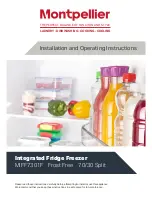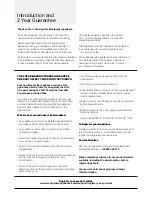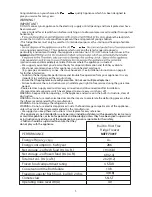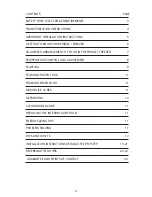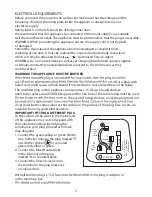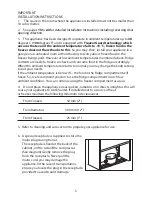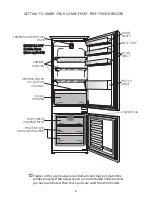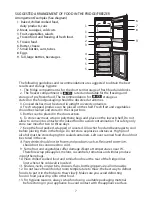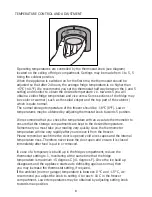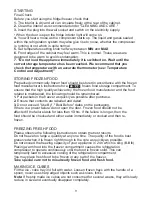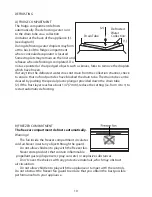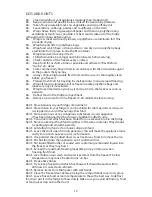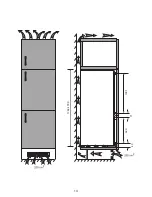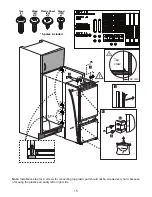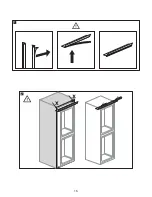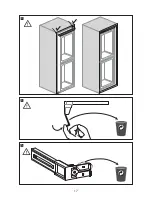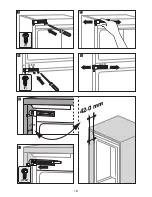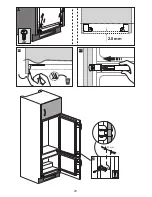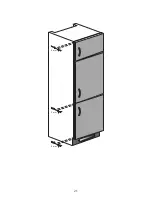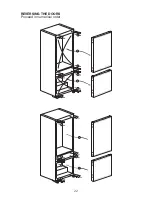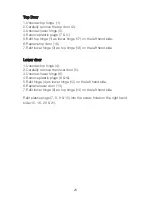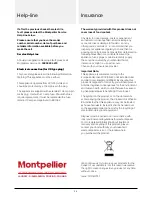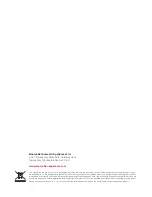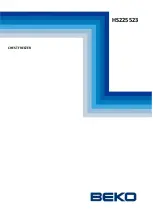
DO'S AND DON'TS
Do- Clean and defrost your appliance regularly (See "Defrosting")
Do- Keep raw meat and poultry below cooked food and dairy products.
Do- Take off any unusable leaves on vegetables and wipe off any soil.
Do- Leave lettuce, cabbage, parsley and cauliflower on the stem.
Do- Wrap cheese firstly in greaseproof paper and then in a polythene bag
excluding as much air as possible. For best results take out of the fridge
compartment an hour before eating.
Do- Wrap raw meat and poultry loosely in polythene or aluminium foil. This
prevents drying.
Do- Wrap fish and offal in polythene bags.
Do- Wrap food which have a strong odour or can dry out in polythene bags,
aluminium foil or place in an airtight container.
Do- Wrap bread well to keep it fresh.
Do- Chill white wines, beer, lager and mineral water before serving.
Do- Check contents of the freezer every so often.
Do- Keep food for as short a time as possible and adhere to "Best Before",
"Use by" etc. dates.
Do- Store commercially frozen food in accordance with the instructions given
on the packets that you buy.
Do- Always choose high quality fresh food and be sure it is thoroughly clean
before you freeze it.
Do- Prepare fresh food for freezing in small portions to ensure rapid freezing.
Do- Wrap all food in aluminium foil or freezer quality polythene bags and
make sure any air is excluded.
Do- Wrap frozen food when you buy it and put it in to the freezer as soon as
possible.
Do- Defrost food in the fridge compartment.
Do- Remove ice cream from the freezer 10-20 minutes before serving.
Don't- Store bananas in your fridge compartment.
Don't- Store melon in your fridge. It can be chilled for short periods as long as it
is wrapped to avoid it flavouring other food.
Don't- Store poisonous or any dangerous substances in your appliance.
It has been designed for the storage of edible foodstuffs only.
Don't- Consume food which has been stored for an excessive time in the fridge.
Don't- Store cooked and fresh food together in the same container. They should
be packaged and stored seperately.
Don't- Let defrosting food or food juices drip onto food.
Don't- Leave the door open for long periods as this will make the appliance more
costly to run and cause excessive ice formation.
Don't- Use pointed sharp edged objects such as knives, forks to remove the ice.
Don't- Put hot food into the appliance. Let it cool down first.
Don't- Put liquid-filled bottles or sealed cans containing carbonated liquids into
the freezer as they may burst.
Don't- Exceed the maximum freezing loads (
4
kg in any 24 hours) when
freezing fresh food.
Don't- Give children ice-cream and water ices direct from the freezer. The low
temperature may cause 'freezer burns' on lips.
Don't- Freeze fizzy drinks.
Don't- Try to keep frozen food which has thawed, it should be eaten within
24 hours or cooked and refrozen.
Don't- Remove items from the freezer with wet hands.
Don't- Close the freezer door before placing the compartment cover in its place.
Don’t- Leave frozen food at room temperature to thaw; the best way to defrost
food is to put it in the fridge to thaw slowly. Make sure you avoid defrosting
food
or food juices drip onto other food.
1
2
Summary of Contents for MIFF7301F
Page 16: ...14 1784 1788 629 40 71 1001...
Page 18: ...16 1 2...
Page 19: ...17 3 4 5...
Page 20: ...18 6 7 8 10 9 11 T T 42 0 mm 42 0mm 1TW...
Page 21: ...19 14 12 13 T 42 0 mm 42 0mm 1TW 15 17 16 1TW 42 0 mm 42 0mm...
Page 22: ...20 W 2 0 mm 18 20 21 90 o 21 mm W 19...
Page 23: ...2 mm 2 mm 2 mm 21...

